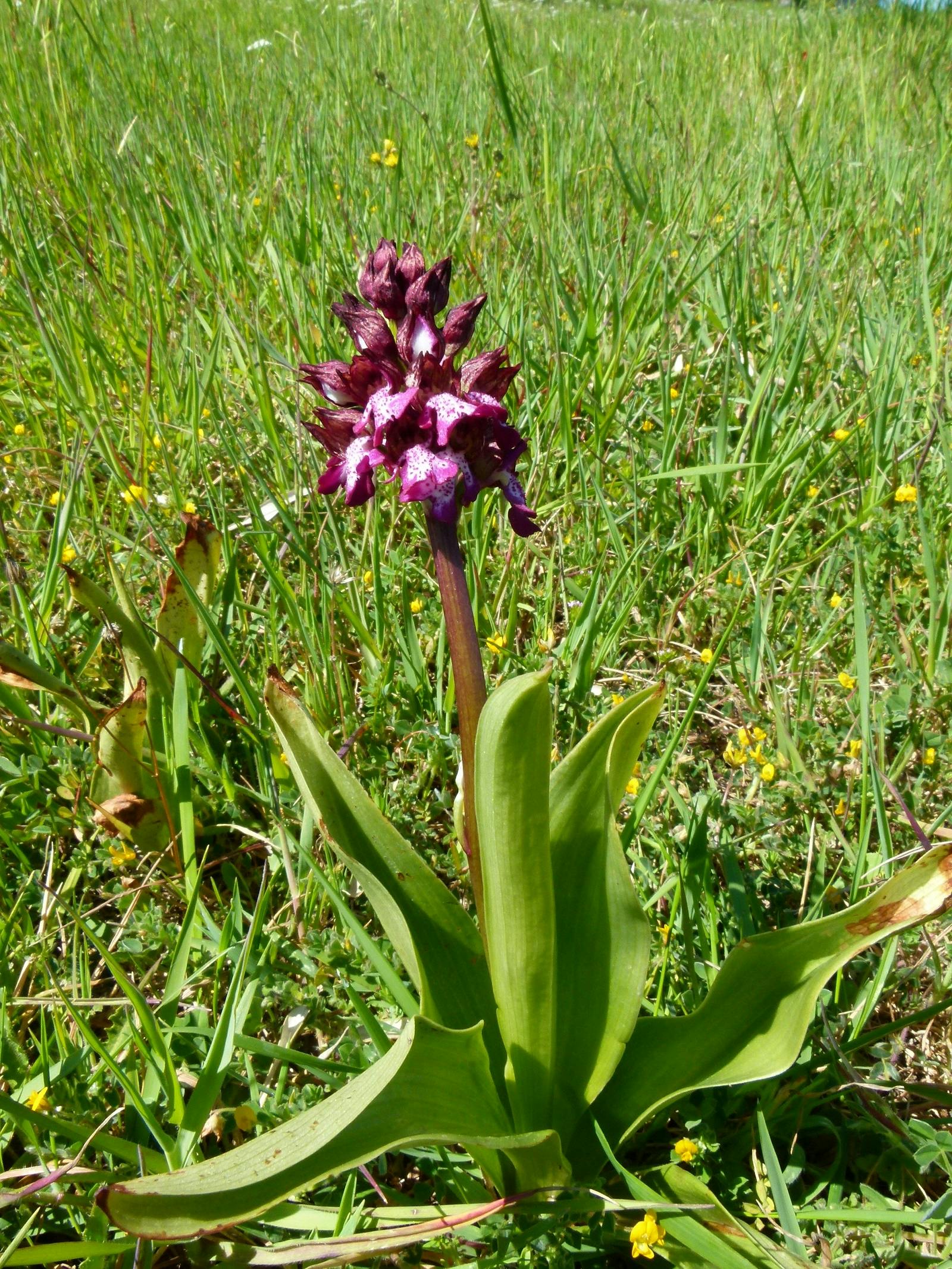Orchid - Genus Orchis
The name comes from Latin orchis, testis, with reference to the shape of the rhizotubes (root system of the plant).
The genus is distributed in the Euro-Mediterranean area and includes around 60 species, of which 17 in Italy. In the Boboli Gardens, we find species like Orchis purpurea.
Orchis purpurea
The name comes from Latin purpureus, purplish, referring to both the colour of the helmet (the set of three sepals and two lateral petals) and the stippling of the labellum.
It is a robust plant with an imposing stature (30 to 80 cm high). The flowers are large, smell of vanilla or bitter almond, and form a usually very dense spike. The labellum (central, highly developed petal) has three lobes, of which the middle one is much larger, and is further divided into two parts, separated by a denticle. The colour of the labellum is usually white or pinkish, sprinkled with small spots formed by tufts of purple hairs. The species is highly variable in terms of colour, shape and size of the labellum. Albino and hypercoloured forms are known to have bloomed.
Orchis purpurea is pollinated by hymenoptera, mainly solitary bees (not honeybees). It does not produce nectar, but insects are attracted by the shape of the flower, which is similar to flowers with nectar. The plant has a slow growing cycle: 8 to 10 years can pass from germination to flowering. The large, ovate-lanceolate, bright green leaves are already visible in March. The plant flowers from April to June.
About 15 plants are known to grow in the Boboli Gardens, in the groves around the Amphitheatre and in the Ganimede Meadows, but only very few actually reach the flowering stage.
